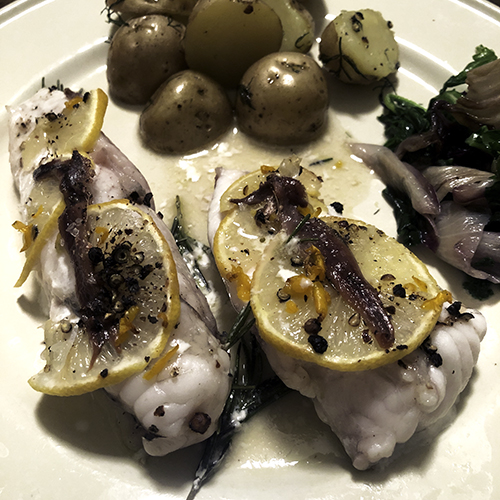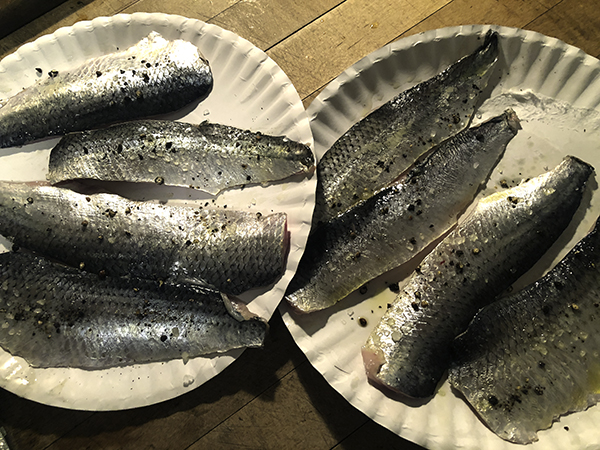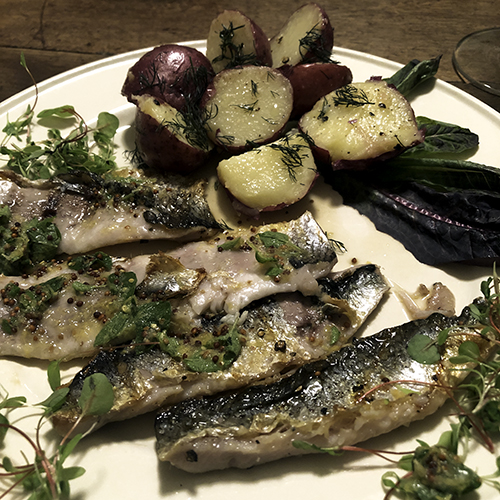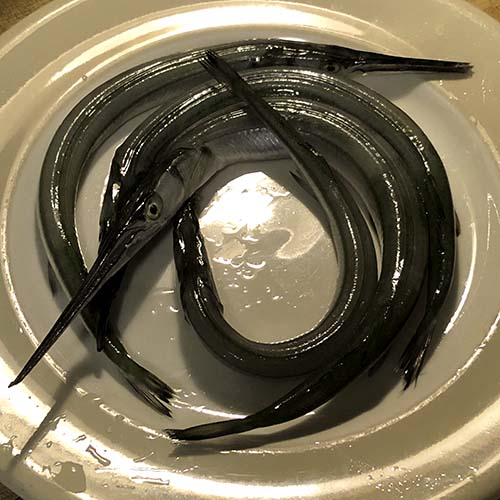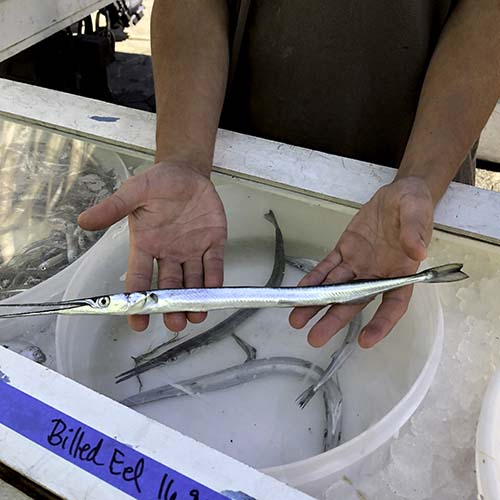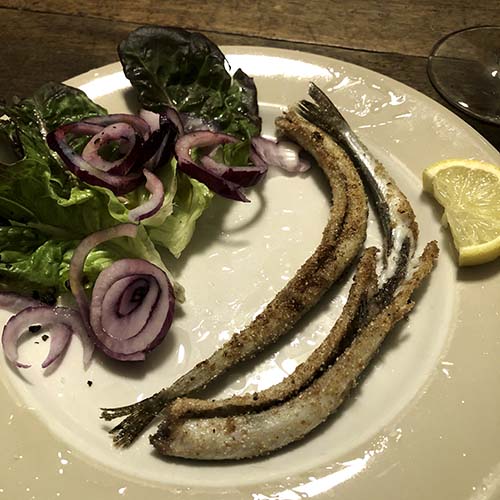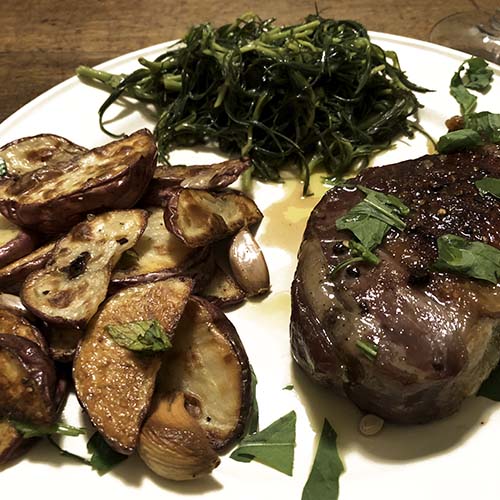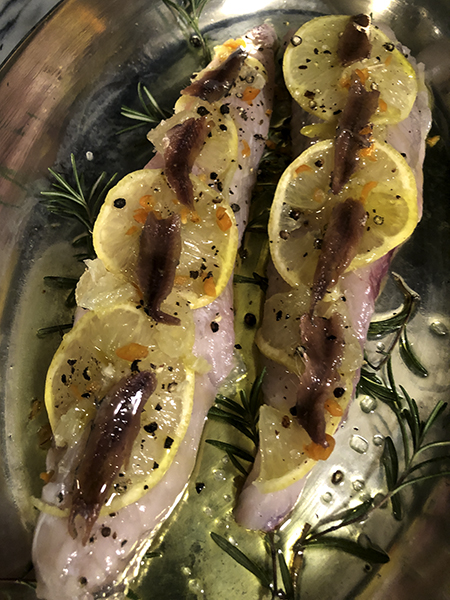
It happened again.
The second appearance of this astonishing dish was as delicious, simply assembled, and good looking as the first.
I had used the same lotte recipe for the preparation (in the U.S., it’s usually called ‘monkfish’) just a few weeks ago, but yesterday at the Greenmarket I was seduced by two perfect ‘tails’. Then while telling my fish monger how I had cooked them the last time I bought Monkfish, I decided I had to do it again.
The basic, quite simple preparation outline, which I think I altered only with the addition of a bit of a fresh seasoning pepper, comes from the women of the London River Cafe, specifically, their book, ‘Italian Easy London River Cafe’, a brilliant guide to cooking with few ingredients, simple techniques – and spectacular results.
Even the accompaniments were similar to those of the earlier dinner, but I decided to publish it anyway, if only for the photo of the lotte inside the au gratin before it went into the oven.
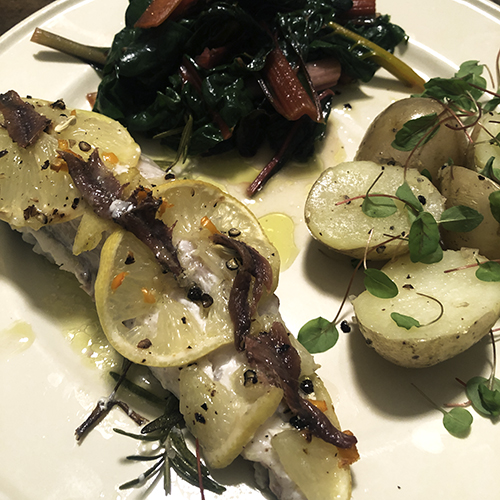
- two 8-ounce monkfish tails, which is a fish also known as Lotte in France, Rape (pronounced “rah-pay”) in Spain, Coda di rospo in Italy, or Teufelfisch in Germany, from Pura Vida Seafood Company, placed inside an a tin-lined copper au gratin pan that had first been heated inside a 425º oven, with olive oil drizzled on the surface, a number of small sections of a rosemary branch arranged on the bottom and the fish placed inside on top of the herb, covered with thin slices cut from most of one lemon (the lemon had been separately seasoned with sea salt, black pepper after it had been cut), sprinkled with a tiny finely chopped orange aji dulce seasoning pepper from Eckerton Hill Farm and given a drizzle of olive oil, each tail topped with one salted Sicilian anchovy that had first been rinsed well, then filleted, and the fish itself seasoned to taste, the pan returned to the oven and cooked until the lotte was done, meaning, until the juices were opaque [about 15, maybe 20 minutes, although it’s important to check, maybe using a reliable instant read thermometer to show a 145º temperature at the center, but using that gauge alone can be tricky with a small piece of fish], removed from the oven and arranged on two plates (again, without a garnish, because it already looked spectacular)
- twelve ounces of Yukon Gold potatoes (described at the market as “new potatoes”, but this is January) from Norwich Meadows Farm, boiled, halved, tossed with olive oil, salt, and pepper, garnished with micro red sorrel from Two Guys from Woodbridge
- a bunch of beautiful tender rainbow chard, also from Norwich Meadow Farms (again, this is January!), wilted in a little olive oil where a halved clove of rocambole garlic had first been heated until softened and fragrant, seasoned with salt, pepper, and a small glug [Brit.] of olive oil
- the wine was a Spanish (Rías Baixas) white, Albariño “Xión”, Bodegas y Viñedos Attis 2019
- the music was Vivaldi’s 1733 opera, ‘Montezuma’, Alan Curtis directing the Ensemble, Il Complesso Bar (noting that the incomplete manuscript of this opera was only discovered in Berlin only in 2002, and the ensemble’s Vivaldi scholar and violinist, Alessandro Ciccolini, restored or completed it for a performing edition)
